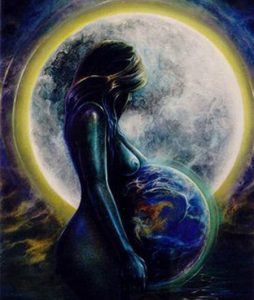The Old Ways are animistic (the numinous life-force exists within everything – see ‘World View‘. Everything is seen as sacred and entitled to veneration; a Deity if want to view it that way. Everything is regarded with reverence; plants, animals, trees, rocks, the Earth Herself and all her places.
Deity Definition
- A God or Goddess
- Anything natural or supernatural that is considered divine or sacred
- A person or thing revered as a God or Goddess

Sacred Definition
- Entitled to veneration or religious respect
- Pertaining to or connected with religion
- Regarded with reverence
Where a particular facet (Mountain, River, Spring etc.) of the natural world displays a special or unique energy this energy may then be viewed as a God or Goddess. These facets have an inherent nature or essence that makes them distinctive; they have quiddity.
Within the Old Ways attributing Deity status isn’t limited to just geographical features of the landscape. When the whole world is sacred, anything within that world that demands a particular attention; that causes a feeling of awe and wonder and thereby engenders an attitude of reverence toward it, is worthy of the status of having a Deity ascribed to it.
This does not necessarily mean that the thing itself is an ACTUAL Deity. It means that that quality is regarded as BELONGING to it. So the mountain itself is not a God/Goddess but the quality of God/Goddess BELONGS to the mountain – there is a subtle difference.
Natural Phenomena as Deity
Probably one of the best examples to use as an illustration is that of the thunderstorm. Not just the odd rumble but a full-blown raging, tumultuous, cacophony. The energy behind this force of nature is immense. It can easily kill, and it certainly demands our respect and reverence. It is unsurprising then that all indigenous cultures have a Deity assigned to thunder.
Abstracts as Deity
Deity is not confined just to things that are tangible. There are abstracts that whilst having no physical or concrete existence are still forces and phenomena that are to be reckoned with. War, Peace, Love, Sovereignty, et.al. These all have qualities belonging to them that engender an attitude of reverence toward them.
Elen of the Ways
Elen of the Ways; our oldest Deity, Lady Sovereignty. Concerned with the balance of the land and the guardianship of the ancient trackways. Elen is the spirit of the deer that our ancient ancestors followed. The deer herds that led them to safe pastures and food, summer and winter. Elen is a female antlered Deity. Only Reindeer females have antlers. So Elen dates back to when the Reindeer were the indigenous deer of our lands. Before the weather warmed and they migrated away to be replaced by the Red deer. She still exists today. The quality that her energy teaches is how to live in harmony with the Earth; how to follow the ancient trackways.
Personification of Deity
Personifying; attributing a personal nature and human characteristics to Deities makes it far easier for us to understand and relate to them. Or is it ‘Personification Incarnate‘? As even energies have qualities & characteristics that give them personality.
Polytheism (Poly = many, theism = belief in Deity)
The Old Ways are Polytheistic. How can they not be? When everything is seen as sacred. And many facets are seen as having special or unique energies that deem them worthy of reverence. There has to be many deities.
Location, Location, Location
Some Deities appear to have been universal. Recognised over very large areas of what are now referred to as ‘Celtic’ lands. These spread, not only through the length and breadth of the British Isles. They also spread onto continental Europe; into Gaul and Germanic regions. Others appear to have been far more localised, such as Brigantia who was the protective Goddess of the Brigantes tribe located in Yorkshire and northern Britain.